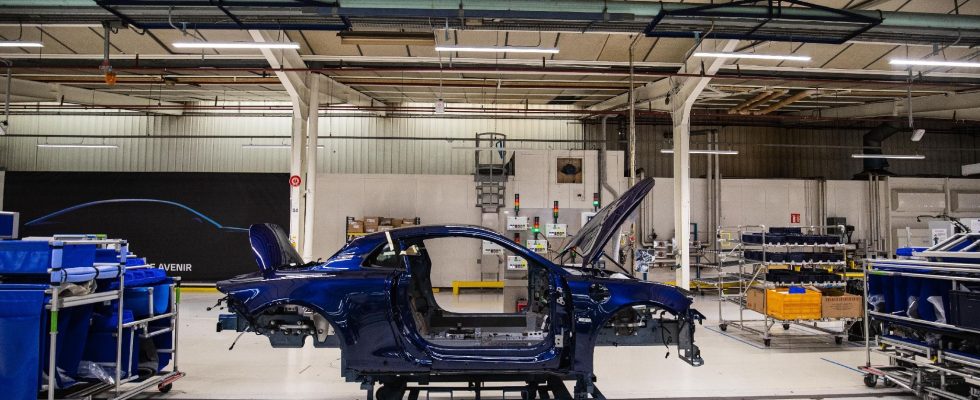Here, a production of medicines. There, assembly of electric cars. Elsewhere, semiconductor lines. And everywhere, armies of robots powered by artificial intelligence (AI) capable of manufacturing and packaging products. No more need to light the workshops: in these no man’s land industrial, the automatons would ensure operations day and night, 24 hours a day and 365 days a year. Hence their nickname “dark plants”. After the disastrous scenario of the company without factories, promoted by Serge Tchuruk (Alcatel) in 2001, will the factory without employees become France’s new industrial horizon?
According to Eric Kirstetter, from the Roland Berger firm, France should prepare for this hypothesis to at least preserve, and at best grow, the meager industrial fabric that it has left… Its share in French GDP having fallen by 20 % to just over 10% between 1990 and 2022, according to INSEE. “We spend our time placing and moving factories on maps. The justice of the peace is the cost, especially that of labor, which quickly leads us to place factories outside France,” assures the consultant, for which the arbitrations are not so much for the benefit of China as of the European States and, to a lesser extent, of North Africa. And to conclude: “One of the answers to the problem is automation. The stronger it is, the more factories we will have. They will employ few employees, but the trade balance and the sovereignty of France will benefit from it.”
While they contest the weight of labor costs in industrial investment decisions – arguing that the quality of land, infrastructure, electricity and training also weigh in the balance – others observers share the idea that France cannot ignore the question of automation. “The country finds itself in a somewhat schizophrenic situation. Qualified labor is a rare commodity there, but we fear that robots will take the place of men. By procrastinating on our automation strategy, we will end up losing all our jobs to those who have made this choice”, says David Cousquer, the founder of the Trendeo firm.
Employees responsible for maintaining the robots
Although it has been trying to remedy this for several years through support measures for the “industry of the future”, France still displays a very low level of robotization compared to its competitors. The International Federation of Robotics estimates that the country installs around 7,000 robots in one year, while Italy installs more than 11,000, Germany almost 26,000 and China, a record, 290,000.
In the town of Tarazona, in the north of Spain, the factory of the automotive supplier Forvia gives an idea of what these ultra-robotic factories really look like. In a blindingly white enclosure, a crowd of machines assemble car doors. From one assembly station to another, the parts are carried by autonomous arms, before being packaged by other robots for shipment. No operators in sight: the site employees, because they have not all disappeared, are responsible for maintaining the system. A model that the French industrialist wants to duplicate. By 2025, Forvia plans to open no less than five sites of this nature around the world. But he refuses to play against employment. “We have retained all our employees by advancing their skills. We do not want to have depersonalized sites, but we are seeking to increase the pace with more efficient machines,” assures a spokesperson.
Diversify the industrial fabric
Are these automated factories the only salvation for France? Not necessarily, especially since not all sectors lend themselves to the massive arrival of robots managed by AI. Hence the interest in diversifying production, argues Thomas Grjebine, economist at the Center for Prospective Studies and International Information (Cepii), a research organization attached to Matignon. “It is not a question of relying only on products with very high added value. We must recreate sectors in a wide range of areas, often less spectacular than semiconductors, but which will make it possible to redensify our productive fabric “It can be fish farming, to reduce our imports of salmon from Norway, or electrical equipment, illustrates the specialist. In doing so, these ecosystems will create value and jobs better distributed across the territory than large investments, generally located near urban areas, even if the factories require less labor.”
A Trendeo study shows this: while initiatives of 1 to 25 million euros generate 4.4 jobs in France, “mega-projects” worth more than 130 million euros create… 0.5. An observation which could lead us to think, on a European scale as well as in France, about the creation of counterparties when public subsidies – often colossal – are granted to the largest industrial projects. Could the obligation to localize part of the supplies help the emergence of a more varied fabric, like the much envied Middle stand German (dense network of SMEs and ETIs)? One thing is certain: from the carbon tax to the minimum local content required, there is no shortage of regulatory levers to attract factories here rather than elsewhere. This is evidenced by the boom in green technology projects in the United States, which are less due to the country’s appetite for robots – it is the third country in the world to deploy the most – than to the famous Inflation Reduction Act of Joe Biden.
.
